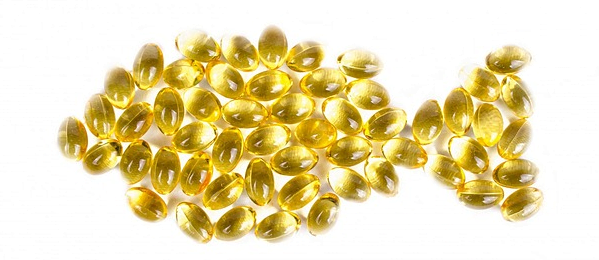When you buy fish oil, krill oil, or algae oil, the number on the front (e.g., “1000 mg fish oil”) is total oil, not your active dose. The Supplement Facts panel should list:
-
EPA (eicosapentaenoic acid): ___ mg
-
DHA (docosahexaenoic acid): ___ mg
-
Per softgel (or teaspoon)
Quick dose math
-
Goal: 500 mg/day EPA+DHA
-
Label: 180 mg EPA + 120 mg DHA = 300 mg EPA+DHA per softgel
-
Needed: 500 ÷ 300 ≈ 1.7 → 2 softgels/day
Be wary of labels that only say “omega-3s” without breaking out EPA and DHA, or “omega-3-6-9” blends (we already get plenty of 6 & 9 in typical diets).
Potency & Forms: Why Some Pills “Work” Faster
Omega-3s come in different chemical forms that can influence absorption and tissue uptake:
-
TG / rTG (triglyceride / re-esterified triglyceride): common in premium fish oils
-
EE (ethyl ester): used in some OTC products and Rx omega-3s
-
PL (phospholipid): typical in krill oil
Some research suggests phospholipid (krill) oils may raise blood omega-3 status with fewer mg, but products and people vary. Bottom line:
-
Compare EPA+DHA per serving (not total oil)
-
Consider cost per gram of EPA+DHA
-
Let your Omega-3 Index tell you which option moves the needle for you
Quality Checklist (So You Get What You Paid For)
-
Third-party tested: IFOS, USP, NSF, or equivalent
-
Freshness: low oxidation (TOTOX) claimed; minimal “fishy” odor
-
Purity: contaminants controlled (heavy metals, PCBs)
-
Transparency: clear EPA & DHA amounts per serving
-
Sourcing: sustainable certifications (e.g., MSC, Friend of the Sea)
-
Allergens: fish/shellfish listed; choose algae oil if vegan or shellfish-allergic
How Much Should I Take?
-
Typical wellness intakes in studies: ~500–1000 mg/day EPA+DHA
-
Take with a meal containing fat to aid absorption
-
For specific health targets (e.g., very high triglycerides), follow your clinician’s guidance
Track, Titrate, Repeat (Omega-3 Index)
Diet, genetics, and supplement form all affect your blood levels. The simple way to know you’re covered:
-
Test your Omega-3 Index (finger-prick blood spot)
-
Adjust dose/form based on your result
-
Re-test in 8–12 weeks to confirm you’re in range
Quick FAQs
Fish oil vs krill vs algae—who wins?
All can work. Fish oil usually gives the most EPA+DHA per dollar; krill offers a smaller dose in phospholipid form; algae oil is an excellent vegan DHA (and sometimes EPA) source. Choose based on dose, budget, and tolerance—then verify by testing.
My softgel is 1000 mg—why is EPA+DHA lower?
Because that 1000 mg is total oil, which includes other fats. Your active dose is EPA mg + DHA mg only.
Burps? Storage?
Take with meals, consider enteric-coated capsules or liquids, and store cool (fridge is fine) to minimize oxidation and aftertaste.
Bottom Line
Pick an omega-3 by EPA+DHA content, not bottle size. Choose a quality-verified product in a form you’ll take consistently, do the dose math, and let your Omega-3 Index confirm it’s working.




